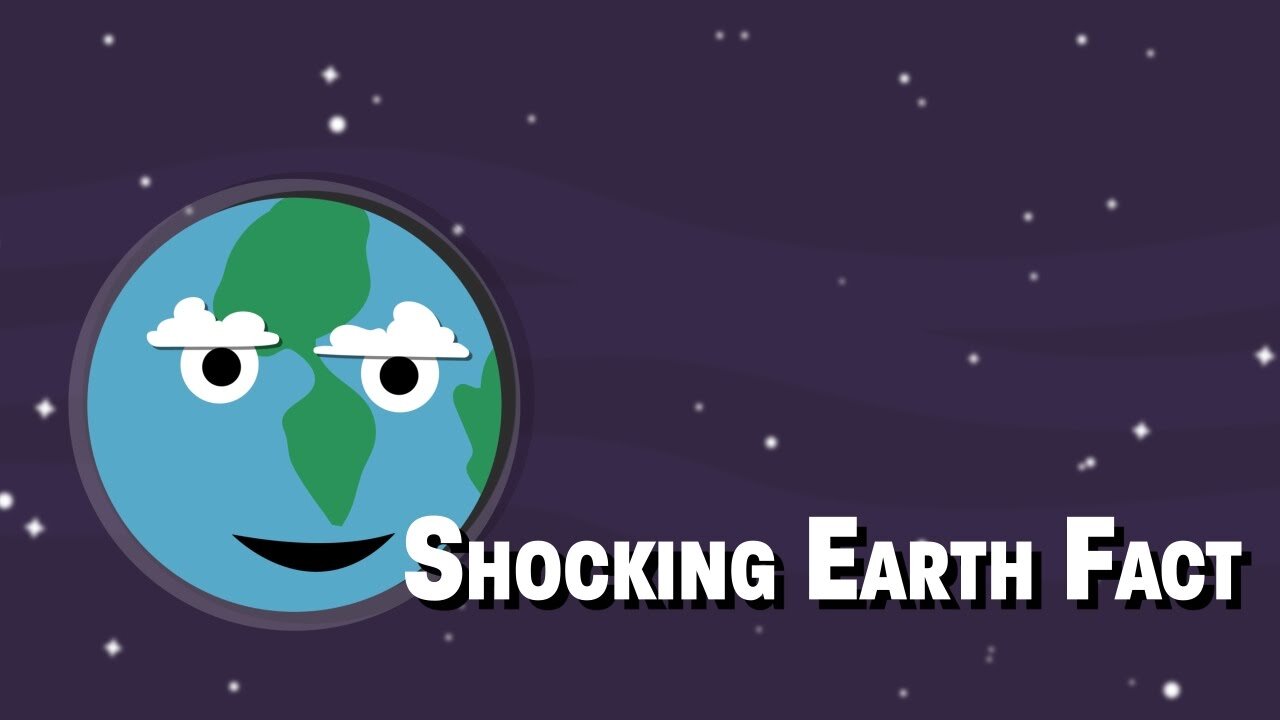Premium Only Content

Some Weird Facts About Earth Will Blow Your Mind
Amazing & Weird Facts about our lovely Home!
🙏🏻 Subscribe if you liked it, like it, leave comments and share with your friends. 🎬
Earth is the third planet from the Sun and the only place known in the universe where life has originated and found habitability. While Earth may not contain the largest volumes of water in the Solar System, only Earth sustains liquid surface water, extending over 70.8% of the Earth with its ocean, making Earth an ocean world. Earth's polar regions currently retain most of all other water with large sheets of ice covering ocean and land, dwarfing Earth's groundwater, lakes, rivers and atmospheric water. Land, consisting of continents and islands, extends over 29.2% of the Earth and is widely covered by vegetation. Below Earth's surface material lies Earth's crust consisting of several slowly moving tectonic plates, which interact to produce mountain ranges, volcanoes, and earthquakes. Earth's liquid outer core generates the magnetic field that shapes the magnetosphere of Earth, largely deflecting destructive solar winds and cosmic radiation.
Earth has an atmosphere, which shields Earth's surface from most meteoroids and UV-light, and has a composition of primarily nitrogen and oxygen. Water vapor is widely present in the atmosphere and forms clouds that cover most of the planet, and traps together with other greenhouse gases in the atmosphere, particularly carbon dioxide (CO2), energy from the Sun's light reaching Earth, creating an average surface temperature of currently 14.76°C. Differing levels of captured energy between geographic regions (as with the equatorial region receiving more sunlight than the polar regions) drive atmospheric and ocean currents, producing a global climate system with different climate regions, and a range of weather phenomena such as precipitation, allowing components such as nitrogen to cycle.
Earth is rounded into an ellipsoid with a circumference of about 40,000 km. It is the densest planet in the Solar System. Of the four rocky planets, it is the largest and most massive. Earth is about eight light-minutes away from the Sun and orbits it, taking a year (about 365.25 days) to complete one revolution. The Earth rotates around its own axis in slightly less than a day (in about 23 hours and 56 minutes). The Earth's axis of rotation is tilted with respect to the perpendicular to its orbital plane around the Sun, producing seasons. Earth is orbited by one permanent natural satellite, the Moon, which orbits Earth at 384,400 km (1.28 light seconds) and is roughly a quarter as wide as Earth. Through tidal locking, the Moon always faces the Earth with the same side, which causes tides, stabilizes Earth's axis, and gradually slows its rotation.
Earth, like most other bodies in the Solar System, formed 4.5 billion years ago from gas in the early Solar System. During the first billion years of Earth's history, the ocean formed and then life developed within it. Life spread globally and has been altering Earth's atmosphere and surface, leading to the Great Oxidation Event two billion years ago. Humans emerged 300,000 years ago, and have reached a population of 8 billion today. Humans depend on Earth's biosphere and natural resources for their survival, but have increasingly impacted the planet's environment. Humanity's current impact on Earth's climate and biosphere is unsustainable, threatening the livelihood of humans and many other life, causing widespread extinctions.
⚠️ All copyrights belong to their legal owners! If you are the author of a fragment from the issue and its distribution infringes upon your copyright, please contact me. We will remove the clip, video or come to an agreement. Thank you!
-
 LIVE
LIVE
Biscotti-B23
1 hour ago $0.01 earned🔴 LIVE TOURNAMENT PRACTICE ⚔ TOP 100 RANK 👑 DEMON SLAYER HINOKAMI CHRONICLES 2
72 watching -
 LIVE
LIVE
FusedAegisTV
17 hours agoStreet Fighter 6 FINALS, CS2 Semifinals | $1,250,000 | Riyadh, Saudi Arabia EWC 2025 !estv
123 watching -
 40:42
40:42
SouthernbelleReacts
1 day ago $0.11 earned😂 American Pie (1999) Reaction | Iconic Teen Comedy, High School Chaos & 90s Nostalgia 🥧
37.3K4 -
 24:06
24:06
True Crime | Unsolved Cases | Mysterious Stories
5 days ago $0.30 earnedShe Traveled Alone… and Never Came Back – 5 Mysterious Unsolved Cases (Part 6)
40.5K6 -
 27:23
27:23
Clickbait Wasteland
21 hours ago $0.12 earnedAsking New Yorkers Who They Support For Mayor: Staten Island
37K20 -
 16:58
16:58
World2Briggs
1 day ago $0.08 earnedThe California Rant: Point Blank With No Fluff or BS. California Gold?
23.3K5 -
 17:49
17:49
Chris Harden
2 days ago $0.04 earnedThe Glass Capital That Shattered | The Decline of Streator, Illinois
17.3K4 -
 51:15
51:15
JohnXSantos
3 days ago $0.04 earnedClothing Brand Manufacturers + Winners
11.4K2 -
 10:06
10:06
Cyclops Videos Joe W Rhea
12 days agoHybrid Super 22 Rifle
11.5K1 -
 8:30
8:30
Millionaire Mentor
1 day agoMaria Bartiromo Plays Clip That DESTROYS Adam Schiff’s Entire Story
8.65K7